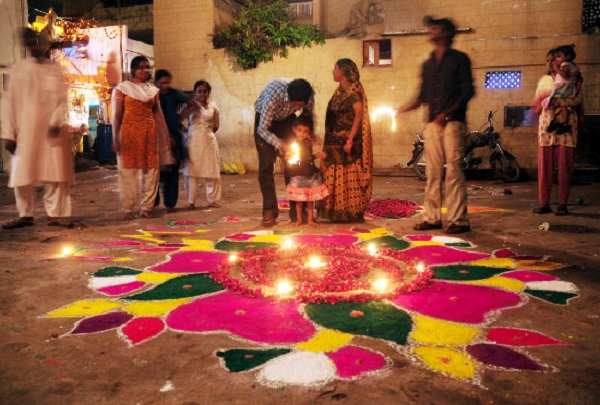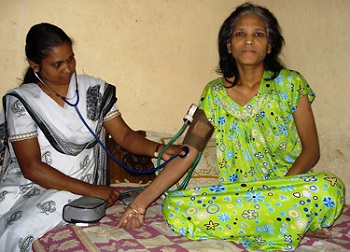What to do when you need to change your current job or start looking for one in an unfriendly economy.
by The Editors | editor@themetrognome.in
Ashish Desai* (36), was doing very well in his job of three years with a Mumbai-based newspaper. Till two months ago, he was confident that despite a worrying economy and job cuts across industries, he could not be affected. Then he received a major jolt: his contract was prematurely terminated with immediate effect, citing budget cuts. “I am now looking for a new job. But so far, nothing has worked out,” he says.
 Ashish is not alone. Over the past few months, several people have either been transferred within departments as part of their companies’ budget cuts and re-organising of personnel, or simply dismissed from service. “Companies are tightening their budgets,” says Avinash Motta, an HR professional who works with an MNC IT firm. “There is less hiring and more firing – this happens every time there is an economic recession.”
Ashish is not alone. Over the past few months, several people have either been transferred within departments as part of their companies’ budget cuts and re-organising of personnel, or simply dismissed from service. “Companies are tightening their budgets,” says Avinash Motta, an HR professional who works with an MNC IT firm. “There is less hiring and more firing – this happens every time there is an economic recession.”
The most job cuts happened in 2008, the first wave of the economic recession to hit our country. However, every time a new recessionary wave hits our shores, we have to pad up for some smart moves in order to save our jobs or move to others. Here’s how:
– If you’re fired, understand why: Understand that it is not personal. However, even if it is personal, and if you are working on a contractual basis (where your company reserves the right to terminate the contract with sufficient notice) there is very little you can do if you are handed the pink slip.
Get smart: Find out why you were fired. Ask for the exact reasons – was it simply a decision to save company money, or was it because of some lacunae on your part? If it is the latter, find out which areas you were seen to lack in.
– Do your research: Is this the time to angle for that job you always wanted? If you’re looking for a job anyway, why not strike out for the big players? However, do your research about each organisation well. Meet up with people currently working in the companies you have applied in, find out the work culture, management-employee relations, etc. Do not apply for a job before doing your research.
Get smart: Find out if companies are currently recruiting, if vacancies exist in the department of your choice, what the pay scale for your position is, and so on. If possible, find out the profile of recent recruits to get a better idea of the kind of employee they are looking for.
– Update your resume: This seems like a very obvious thing to do, but astonishingly, most people only add their last jobs to their existing resumes and think they are done. Instead, read your resume once again. Delete the elements that are not required, and add relevant details which potential employees will be interested in.
read your resume once again. Delete the elements that are not required, and add relevant details which potential employees will be interested in.
Get smart: Make multiple copies of your resume, one each for the company you will be sending it to. Each company looks for something different from a potential employee. If you don’t know how to make your resume attractive, enlist the help of professional resume makers for the job.
–List yourself with job portals: Job portals will inundate you with opportunities across sectors and regions. The job search becomes easier and all you have to do is apply.
Get smart: Be careful while sifting through information – some of the results may be outdated or you may be given searches that are irrelevant to you. Read the client’s requirements carefully before applying.
– Look for a ‘hook’ to get you in: These days, it is rare for people to get an interview call simply because they sent a resume. You will have to be creative not just with your resume, but with your overall approach.
Get smart: Ask a friend or acquaintance in the company you have applied in to ‘put in a word’ about you to the recruiting authority. That way, you will know at once if they are looking to hire somebody with your skills. If they are interested, your contact at the company must be aware of your current pay package, work experience and job skills.
– Follow up: If you’ve applied, don’t just sit back and wait for a call. Follow up diligently till you feel sure that either you will be called for an interview or that your application has been rejected.
Get smart: However, don’t stalk the HR or the manager constantly. Send respectful reminders via email. If they have given you a contact number, phone them up to ask the status of your application. Don’t be pushy, but be urgent enough for them to realise that the job is important to you.
 – Make a good impression: The interview meeting is the most crucial phase of the process. Dress well, be sharp and attentive, and answer questions in a way that shows you have done your research for the interview. But don’t seem like a know-it-all: give out information only when relevant.
– Make a good impression: The interview meeting is the most crucial phase of the process. Dress well, be sharp and attentive, and answer questions in a way that shows you have done your research for the interview. But don’t seem like a know-it-all: give out information only when relevant.
Get smart: Be honest. Don’t lie or hedge around the real reason why you have applied to them. However, don’t plead to be recruited, and do not badmouth the company you were last working with. Let the recruiters understand that hiring you would be beneficial to them.
– Negotiate well: Since you are applying, there is little chance of the company offering a chance for lengthy salary negotiations. Don’t underquote just to secure the job, but don’t overquote either.
Get smart: Ensure that they pay you more than your last company did, and that your tax structure is not adversely affected. Sit with the HR to understand your take-home component and your investment declaration.
– Don’t sit idle: If you don’t secure a job right away, don’t fall prey to depression. Keep yourself busy and don’t be disheartened by rejection. You may have to wait a while, but you will find something in the end.
Get smart: Take up freelancing jobs to pay the bills and to keep busy. If you have enough time and money, go on a break to recharge your batteries – travel, learn a craft, meet up with family and friends, invest time in your hobbies.
(Pictures courtesy www.mediabistro.com, www.glassdoor.com, talentegg.ca, www.yorksj.ac.uk)
 The residents of Campa Cola have found support from various political parties and people across religious faith supporting their cause.
The residents of Campa Cola have found support from various political parties and people across religious faith supporting their cause.











